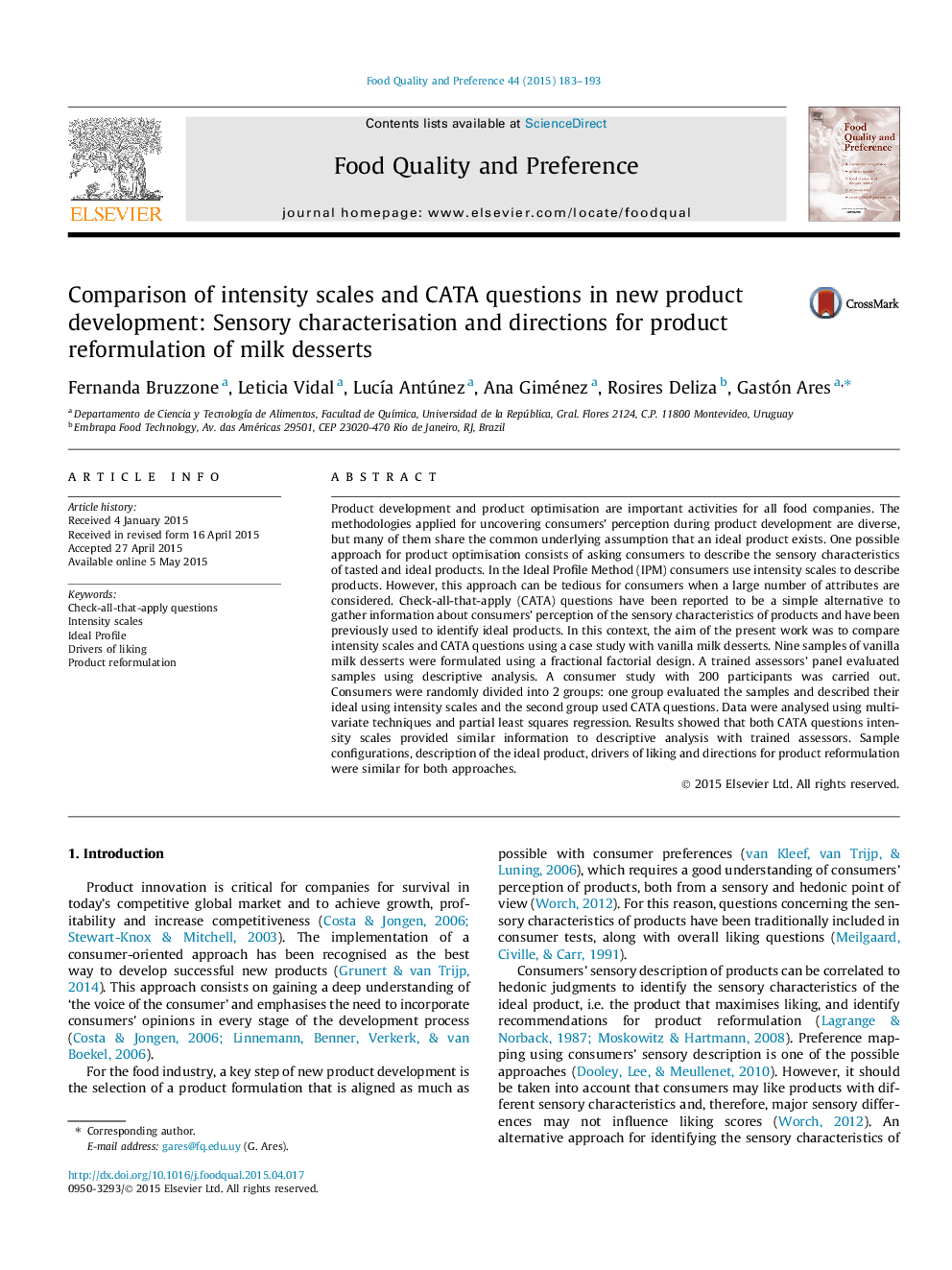| کد مقاله | کد نشریه | سال انتشار | مقاله انگلیسی | نسخه تمام متن |
|---|---|---|---|---|
| 6261380 | 1613153 | 2015 | 11 صفحه PDF | دانلود رایگان |

- CATA questions and intensity scales were compared for the development of milk desserts.
- Both methodologies provided similar product spaces.
- Sample configurations tended to be slightly more stable for CATA questions.
- Description of the ideal product was similar for both methodologies.
- Directions for product reformulation did not largely differ.
Product development and product optimisation are important activities for all food companies. The methodologies applied for uncovering consumers' perception during product development are diverse, but many of them share the common underlying assumption that an ideal product exists. One possible approach for product optimisation consists of asking consumers to describe the sensory characteristics of tasted and ideal products. In the Ideal Profile Method (IPM) consumers use intensity scales to describe products. However, this approach can be tedious for consumers when a large number of attributes are considered. Check-all-that-apply (CATA) questions have been reported to be a simple alternative to gather information about consumers' perception of the sensory characteristics of products and have been previously used to identify ideal products. In this context, the aim of the present work was to compare intensity scales and CATA questions using a case study with vanilla milk desserts. Nine samples of vanilla milk desserts were formulated using a fractional factorial design. A trained assessors' panel evaluated samples using descriptive analysis. A consumer study with 200 participants was carried out. Consumers were randomly divided into 2 groups: one group evaluated the samples and described their ideal using intensity scales and the second group used CATA questions. Data were analysed using multivariate techniques and partial least squares regression. Results showed that both CATA questions intensity scales provided similar information to descriptive analysis with trained assessors. Sample configurations, description of the ideal product, drivers of liking and directions for product reformulation were similar for both approaches.
Journal: Food Quality and Preference - Volume 44, September 2015, Pages 183-193